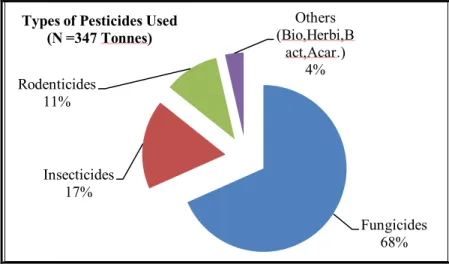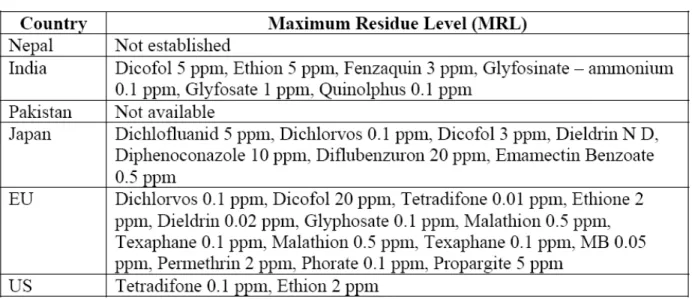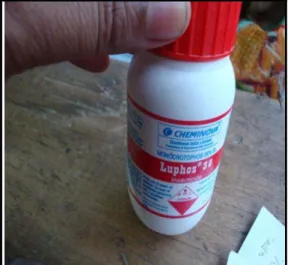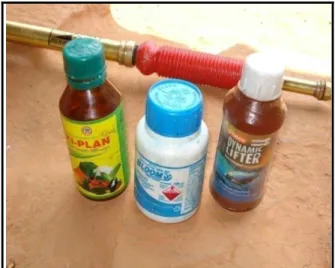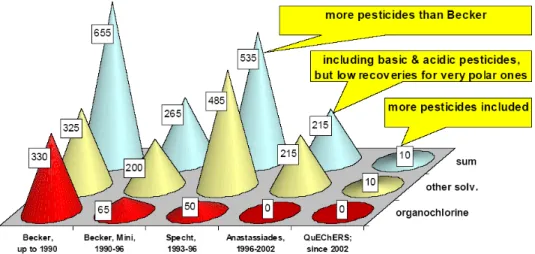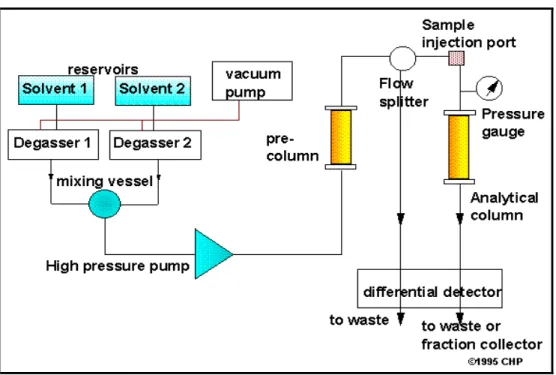Partik for providing me with the technical support to carry out the laboratory analysis of the samples. Data on pesticide use in various parts of the country has not been collected for many years due to technical and financial constraints. Another objective was to investigate the awareness level of the farmers regarding pesticide use and health safety by means of a questionnaire survey.
It has been found that many countries in the world have widely used chemical pesticides to increase agricultural productivity to meet the growing demand for food. Due to unfair and indiscriminate use of pesticides, many accidents have occurred in different parts of the world, especially in developing countries where farmers do not have sufficient knowledge about pesticide use and safety. Like any other country in the world, Nepal, a developing country, is also faced with the problems of widespread use of pesticides and food security.
As in many other parts of the world, Nepal is not an exception in the case of misuse and overuse of chemical pesticides in agricultural production. The scope of the study was to analyze the levels of pesticides in different food and soil samples from the Kathmandu Valley, as well as to assess the awareness level of farmers regarding pesticide use and safety.
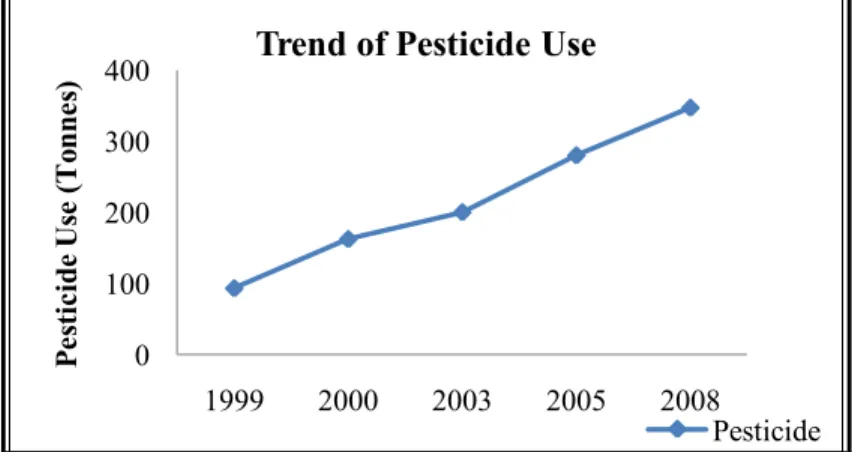
LITERATURE REVIEW
- Environmental effects of pesticides
- Persistent organic pollutants
- Health effects of pesticides
- Problems of infrastructure in developing countries
- Infrastructure for pesticide use in Nepal
- Legal and institutional infrastructure
- Pesticide management and registration system
- Inadequate residue control measures
- Emerging challenges for trading
- Classification of pesticides (Guidelines, Levels, Standard Values)
- Former studies on pesticide residue level
- Available methods for the extraction and analysis of pesticides in food
In many developing countries, there is always a lack of an adequate pesticide approval/registration process and/or inadequate resources to implement and enforce existing schemes, no legislation on working conditions and no post-registration monitoring of pesticides. By effectively implementing the Food Act, protect the rights and well-being of consumers and thus maintain the standard of food quality during production, processing, import and export; and. Lack of laboratory capacity and technical know-how for pesticide residue analysis and toxicological analysis.
Due to the lack of sophisticated laboratory recognized by Food and Agriculture Organization (FAO) and World Health Organization (WHO), food samples requiring thorough testing have to be sent to India from Nepal (DFTQC, 2010). Some of the highly hazardous pesticides found used by the farmers during the field visit are represented by Figures 3 and 4. However, a problem with the ethyl acetate is that some of the most polar pesticides do not easily partition into the ethyl acetate phase.
Despite their advantages, none of the techniques have overcome practical limitations to allow their widespread use (Anastassiades et al. developed a method known as QuECheRS (Quick, Easy, Cheap, Rugged and Safe), which is widely used for the extraction of food samples worldwide. A schematic (Figure 5) of the analytical steps of the QuECheRS method is as follows;.
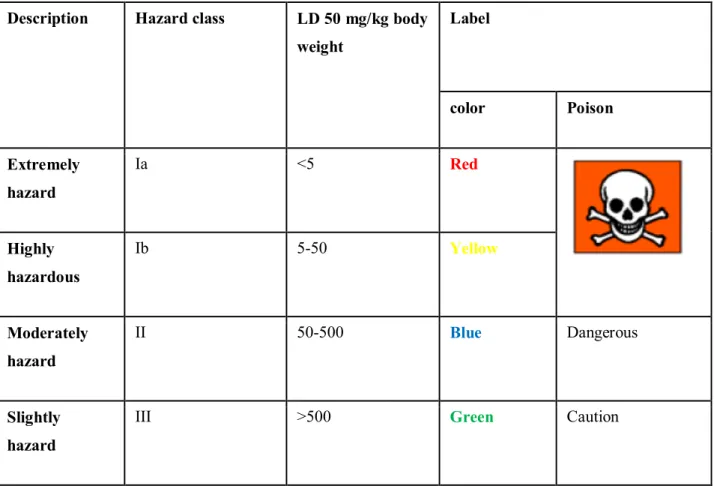
To increase the recovery of polar compounds, large amounts of Na2SO4 are usually added in MRM procedures with ethyl acetate used to bind the water (Anastassiades et al., 2003).
HaC and Analyte Protectants GCMSD and LCMS
MATERIALS AND METHODS
- Study area
- Study period
- Questionnaire survey
- Sample collection
- Pesticides selected for laboratory analysis
- Laboratory analysis of soil and food (tea, fruits and vegetables)
- Soil analysis .1 Instrumentation
- Food analysis (tea, fruits and vegetables)
Field study was carried out in the selected sites to collect the information on various aspects of pesticide use and safety and also to use this information as the baseline data for the laboratory analysis of the collected food samples. The neighboring districts around Kathmandu selected for the study purpose were; Dhading (Chhatradeurali and Dhading Besi), Lalitpur, Bhaktapur and Thimi. Based on these survey results, different pesticides that they use in their farm were identified, which were selected for the laboratory analysis of the collected samples to study their residue level.
The samples were stored in a freezer and brought to the laboratory for storage at -40C. Carbendazim, chlorpyrifos, cypermethrin, dichlorov, dicofol, dimethoate, dimethomorph, diphenylamine, endosulfan, ethion, fenvalarate, imidacloprid, methyl parathion, omethoate and phenyl phenol were the pesticides selected for this study. Food samples (tea, fruit and vegetables) were brought to a food testing laboratory (LVA GmbH) in Vienna for laboratory analysis.
The development of the extraction method for the analysis of soil samples and the extraction of soil samples were carried out in the laboratory of the Institute for Forest and Soil Research of the University of Natural Resources and Applied Life Sciences (BOKU) in Vienna. LVA is a pioneering laboratory in Austria, famous for microbiological and chemical analyses. Individual and mixed stock solutions were stored at -40°C while calibration standards were prepared on the day of analysis. Calibration standards, 2 mL each, were transferred to HPLC vials for analysis in the HPLC system.
The extraction of the soil sample was done by following the QuEChERS method that has been used so far only for the extraction of food samples. In the current study, the QuEChERS method was adapted and subsequently applied for the analysis of soil samples. One set of the sample was stored at -40°C for further analysis if needed and the other set was used for the LC/MS-MS analysis.
Before the soil samples are loaded into the LC/MS-MS system for the extracted soil samples, the LC/MS-MS system must be optimized for the parameters (pesticides) to be analyzed. Out of fourteen pesticide standards selected for the study, only eleven pesticides were detected and their retention time was calculated which is represented in Table 7 as follows; Therefore, the apparatus, chemicals, reagents, solvent required for the extraction of food samples were the same as that required for the soil sample, which has been well explained in the above section.
The steps followed for the extraction of food samples are represented as follows in Figure 20;. The lists of the retention time (min), the target ion and the qualifying ions of the pesticides to be analyzed for the full scan screening were selected.
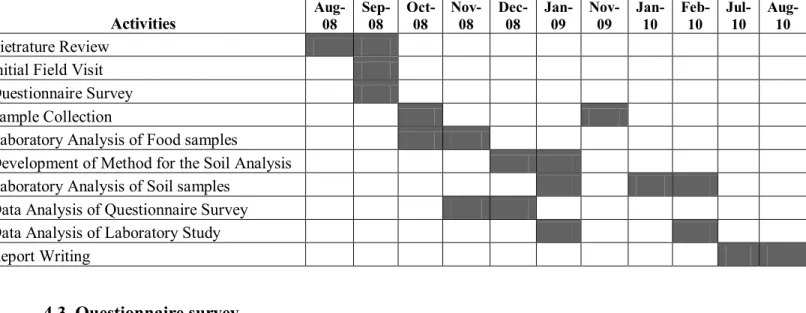
RESULTS AND DISCUSSION
- Survey results
- Source of information about pesticide use among farmers
- Storage of pesticide
- Stages of pesticide use by the farmers
- Application of pesticides
- Waiting time after pesticide use
- Safety measures adopted during pesticide use
- Knowledge about the health impacts of pesticide application
- Symptoms of health impacts
- Results of laboratory studies
- Fruits and Vegetables
- Soil
Pre-harvest application of pesticide is a dangerous practice because it can lead to excessive amounts of residues in food crops, especially in vegetables, causing adverse health effects (Dahal, 1995). Application of pesticide by females can be more dangerous because if the female does not take protective measures during and after pesticide application, her skin can be contaminated with pesticides that can be transferred to other family members (like baby) through various ways or contamination of food that she prepares. So it is very important to take protective measures during and after pesticide application to prevent pesticide hazard.
The application of pesticide near harvest time may be the main reason for the contamination of fruits and vegetables brought to Kathmandu from surrounding districts. The adoption of safety measures during and after application of pesticide is very important factor for preventing harmful impacts of pesticide. Out of 30 farmers who were interviewed, 56% had knowledge about the health impacts of pesticides while 44% did not (Figure 25).
Analytical results of laboratory tests to investigate the amount of pesticide residues in food (tea, fruits and vegetables) and soil samples were described as follows;. The following graph shows the content of pesticide residues in tea samples of different quality and type. The graph above (Figure 28) shows the content of pesticide residues in soil samples taken from the farm of the interviewed farmers at a depth of 10 cm.
The graph below (Figure 29) explains the distribution of pesticide residues at different depths of 10 cm, 30 cm and 50 cm in the soil sample of the study area. This indicated that farmers were using the same type of pesticide since the past and were continuing to use the same. The pesticide concentration was found to be homogeneously distributed at all depths of 10cm, 30cm and 50cm.
This showed that farmers have always continued to use the same type of pesticides as this study showed. Based on the findings of this study, the following recommendations were made to improve the current situation of pesticide use in Nepal. Until farmers are far from being aware, the problem of pesticide pollution cannot be solved.
The activity of pesticide residue monitoring should be done efficiently and regularly by the government. Stajnbaher, and F.J.Schenck (2003) Rapid and easy multiresidue method using extraction/partition and dispersive solid phase extraction for the determination of pesticide residues in produce.
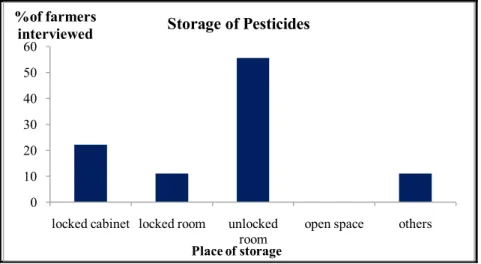
LIST OF TABLES, FIGURES AND ABBREVIATIONS
- List of tables
Distribution of pesticides in soil samples at 10cm, 30cm and 50cm depth 8.3 List of abbreviations.
